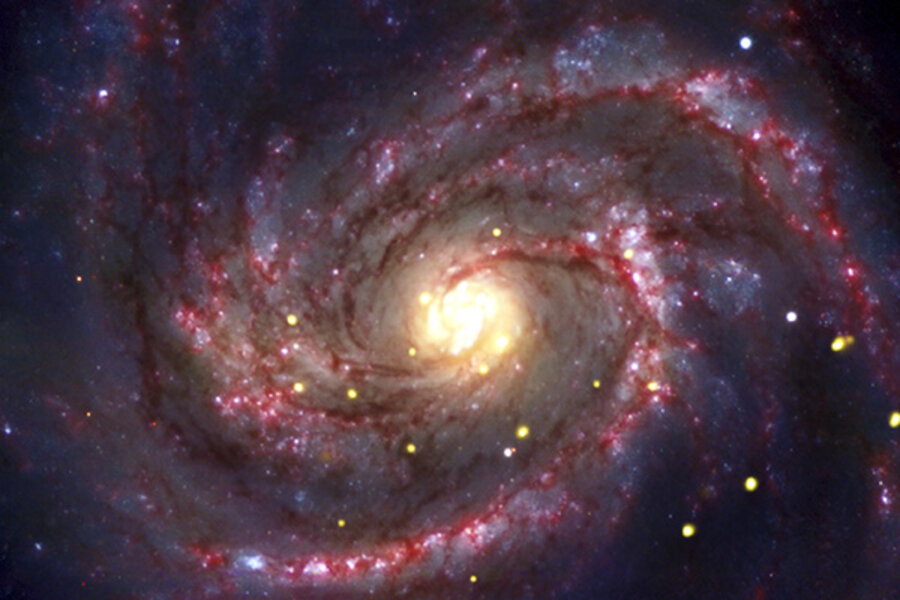Youngest black hole evidence found in cosmic explosion aftermath
Loading...
A cosmic explosion seen 31 years ago may have been the birth cry of the youngest black hole ever observed, which could help researchers understand how black holes are born and evolve.
Studying a baby black hole should also help astronomers understand what determines the fate of stars, as well as how common black holes are in our galaxy and throughout the universe, researchers said. [Photo of the baby black hole's location.]
Space photos of the day: Black Holes
"What's really exciting about it is we know the exact birth date of a black hole for the first time," Kim Weaver, of NASA's Goddard Space Flight Center, told reporters today (Nov. 15). "It's a wonderful opportunity for astronomers to look at these young systems."
Bright X-ray black hole
NASA's Chandra X-ray Observatory picked up strong X-ray emissions coming from the region around an exploded star, or supernova, named SN 1979C. SN 1979C, located about 50 million light-years away in the galaxy M100, was observed exploding in 1979.
Other instruments, such as NASA's Swift satellite, the European Space Agency's XMM-Newton and the German ROSAT observatory, had also noticed the bright source of X-rays, which remained steady from 1995 to 2007.
The X-ray emissions are consistent with radiation thrown off by a black hole gobbling up gas and dust, scientists said. The object appears to be about five times as massive as our sun.
If this interpretation is correct, the baby black hole wouldn't be the first one that astronomers have found. They've discovered many other new black holes in the distant universe, chiefly through the detection of powerful surges of high-energy radiation called gamma-ray bursts.
But this baby black hole is different, researchers said. It's much closer, for one thing, so astronomers should be able to watch how it changes over time.
The newly discovered black hole also doesn't seem to have an associated gamma-ray burst. Theorists think that most black holes probably don't produce gamma-ray bursts — meaning the newly discovered one is likely typical of most black holes in the universe.
"This may be the first time the common way of making a black hole has been observed," said study co-author Abraham Loeb, of the Harvard-Smithsonian Center for Astrophysics, in a statement.
The researchers will report their results in an upcoming issue of the journal New Astronomy.
Black hole birth by explosion
Researchers think the star that exploded to form SN 1979C was about 20 times as massive as our sun. Star masses dictate what happens to them after death, and this one appears to be right on the dividing line between two divergent fates.
Stars less than 20 solar masses tend to form extraordinarily dense objects called neutron stars, while larger ones turn into light-swallowing black holes, researchers said. So SN 1979C should help them map out more precisely where that dividing line is.
"This supernova will help astronomers understand which stellar explosions make neutron stars and which ones make black holes," said Alex Filippenko of the University of California, Berkeley.
Are pulsars to blame?
Although researchers said a baby black hole is the most likely source of the X-rays, there are several other possibilities.
One alternative explanation is that the X-rays are coming from a young, rapidly spinning neutron star that's generating a powerful wind of high-energy particles, researchers said. This would make the object in SN 1979C the youngest and brightest example of such a "pulsar wind nebula," and the youngest known neutron star.
The Crab pulsar, the best-known example of a bright pulsar wind nebula, is about 950 years old.
Researchers should be able to confirm whether or not a black hole is the X-ray source after they gather and look at some more data, they said.





